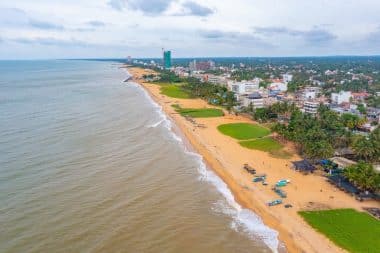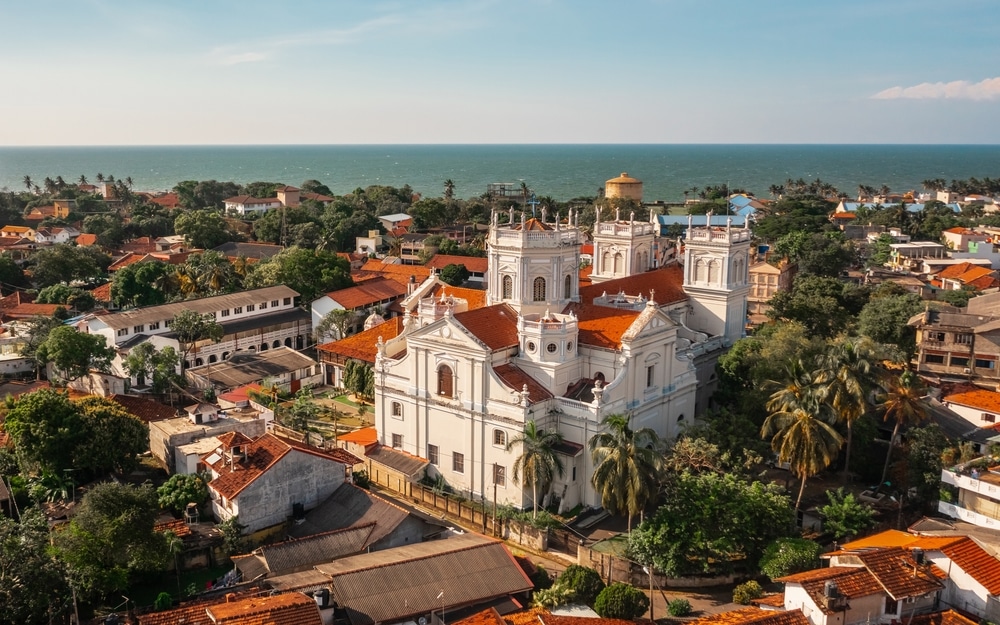The city of Negombo on the west coast of Sri Lanka is one of the most important fishing ports of the island state in Southeast Asia and a true dream destination in the middle of the Indian Ocean. Fishing here is still largely traditionally carried out with outrigger canoes. Negombo has over 120,000 inhabitants and is located about 40 kilometers north of the capital Colombo. About 20 kilometers away in Katunayake is Bandaranaike Airport, so you can reach the seaside resort in about 30 minutes by bus, taxi or three-wheeler. In the north of the old city area there are attractive hotel complexes. However, the number of tourists in Negombo is much lower than in the seaside resorts on the southern and southwestern coasts of the island. It is definitely worth staying longer in Negombo.
Luxurious and affordable accommodations
In the north of Negombo, luxurious, larger hotels are located very close to excellently developed beach sections. But even those seeking relaxation with a lower budget will find what they are looking for in Negombo. Because in the immediate vicinity of the city there is a cozy neighborhood with neat but inexpensive quarters. Here, around Poruthota Road and Lewis Place, friendly locals mingle with backpackers, and it’s easy to get in touch with each other. Sometimes a small market is held with exotic food stalls. You can linger comfortably and let your gaze wander over the ocean, which offers a unique spectacle, especially at sunset.
Numerous churches and cathedrals
Sri Lanka is predominantly Buddhist. However, Negombo forms a Christian enclave. In 1505, the Portuguese conquered the western coastal areas and the north of Sri Lanka. The missionary work of the locals to Christianity was particularly successful in Negombo. A large part of the population is Catholic and names like Fernando or Santos are not uncommon. Numerous churches and cathedrals characterize the cityscape. On Sundays, only a few outrigger boats, called Oruwas, will be seen on the sea. Because the caste of fishermen is largely Catholic. The few fishermen who do go fishing are Muslims and not Buddhists. The fresh fish is offered daily at the large fish market directly on the beach.
The fish market – a special spectacle

The important position as a fishing port cannot be overlooked in Negombo. The large fish market is divided into two parts. Close to the inflow to the lagoon, wide areas are used for drying fish. In the market halls, on the other hand, there is loud haggling over prices. It’s a spectacle that you have to experience. The most important fish species is the Spanish mackerel, which is called seerfish. But you also get to see many other sea creatures, from crabs and crabs to giant tuna and sharks. Fish is the staple food in Sri Lanka. Traders with bicycles bring the fresh produce to the numerous small restaurants and food stalls in Negombo and on the island.
A unique fauna and flora
When visiting the fish market, you should also take a closer look at the lagoon. Due to the flood, the freshwater lake is regularly fed with salt water. It provides an important habitat for crabs and fish, which in turn attract many birds. With luck, larger monitor lizards can also be observed near the lagoon. Colonies of the animals, which are reminiscent of dinosaurs, can also be observed on tours with small boats. At low tide, you can walk into the mangrove forests and discover numerous animals in the water and on land. Of course, on many stretches of coast you can also just enjoy the golden beaches and the crystal-clear, deep blue sea.
The Dutch canals

In the middle of the In the 17th century, the Dutch took possession of the west and north of Sri Lanka. The legacy of these colonial rulers is a 120-kilometre-long canal from the capital Colombo via Negombo to Puttalam, a network of canals in Negombo and the Dutch fort. The canals are called cinnamon canals, because they were once used to transport Ceylon cinnamon, which is in demand worldwide, from the plantations to be shipped to the sea. Today, the canals are used as transport routes and tourists can sail through the waterways in small boats. Such a trip, during which you can observe the colourful, everyday hustle and bustle on the banks built up with houses and overgrown with palm trees, is tantamount to a little journey through time. Incidentally, the fact that many streets and squares have English names is due to the fact that after the Dutch, at the end of the In the 18th century, the British came as conquerors.
The center of Negombo
The center of Negombo is hardly touristy. Here you will find almost exclusively authentic shops for the local population. Around the striking clock tower in the centre there are interesting markets and numerous pretty food stalls with seating where you can eat delicious curry dishes with rice and drink delicious tea.


